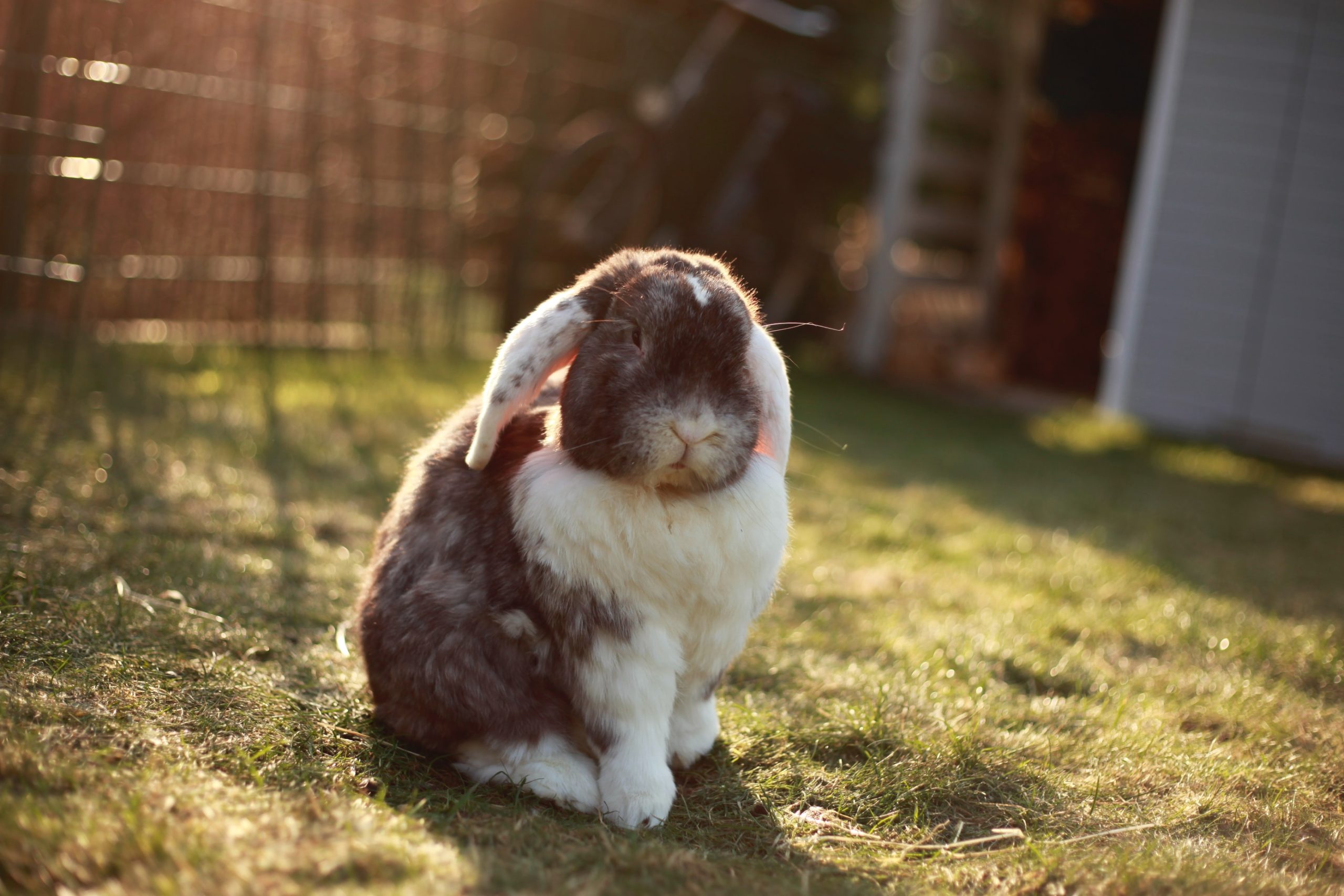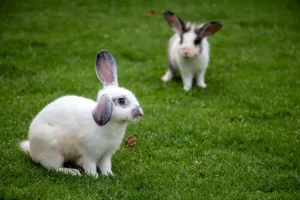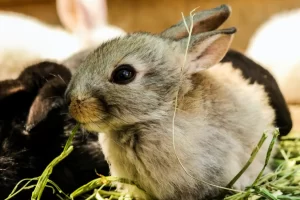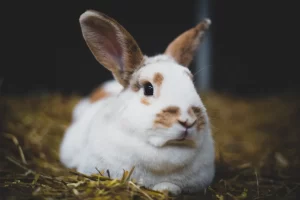Are you tired of your rabbit’s dewlap hanging down like a wilted flower? It’s time to take action and get rid of that pesky pouch! In this article, we will guide you through the steps to reduce and manage your rabbit’s dewlap, giving them a healthier and more active life.
From understanding the causes to implementing diet, exercise, grooming techniques, and even medical interventions if necessary, we’ve got you covered.
Say goodbye to the dewlap and hello to a happier bunny!
In This Article
- 1 Key Takeaways
- 2 Understanding the Rabbit’s Dewlap
- 3 Identifying the Causes of an Enlarged Dewlap
- 4 Diet and Nutrition for Managing the Dewlap
- 5 Exercise and Physical Activity to Reduce the Dewlap
- 6 Grooming Techniques for a Healthier Dewlap
- 7 Medical Interventions for Severe Dewlap Issues
- 8 Preventing the Return of a Dewlap
- 9 Frequently Asked Questions
- 9.1 Can the Dewlap on a Rabbit Be Removed Surgically?
- 9.2 How Long Does It Typically Take to See Results From Diet and Exercise Changes in Reducing a Rabbit’s Dewlap?
- 9.3 Are There Any Specific Grooming Products or Techniques That Can Help Improve the Appearance of a Rabbit’s Dewlap?
- 9.4 Can Hormonal Imbalances Contribute to the Development of a Rabbit’s Dewlap?
- 9.5 Are There Any Alternative Therapies or Natural Remedies That Can Be Used to Reduce a Rabbit’s Dewlap?
- 10 Conclusion
Key Takeaways
- Maintaining a healthy weight through a balanced diet and regular exercise can help reduce the size of a rabbit’s dewlap.
- Regular grooming, including brushing and massaging the dewlap, can promote healthier skin and improve blood circulation.
- Medical interventions, such as medications or surgical removal, may be necessary for severe dewlap issues.
- Preventing the return of a dewlap involves maintaining a healthy diet, encouraging regular exercise, regular grooming, monitoring overall health, and addressing potential issues early.
Understanding the Rabbit’s Dewlap
Do you understand the purpose of the rabbit’s dewlap?
The dewlap is a flap of skin located under the chin of female rabbits, and it serves multiple purposes.
Firstly, it’s a sign of sexual maturity and can indicate that a female rabbit is ready for breeding.
Additionally, the dewlap acts as a cooling mechanism for rabbits, as it contains many blood vessels that help regulate their body temperature.
It also provides protection for the delicate neck area.
To ensure proper rabbit dewlap care, it’s important to keep the dewlap clean and dry.
Regularly check for any signs of infection or inflammation, such as redness or discharge.
If you notice any issues, consult a veterinarian for dewlap health tips and guidance on how to maintain your rabbit’s dewlap in optimal condition.
Identifying the Causes of an Enlarged Dewlap
Have you noticed any changes in your rabbit’s behavior that could potentially explain why their dewlap has become enlarged? It’s important to understand the causes of dewlap enlargement in rabbits in order to provide appropriate treatment options.
Here are some possible reasons for an enlarged dewlap:
- Hormonal changes: Hormonal imbalances, such as during pregnancy or false pregnancy, can lead to dewlap enlargement.
- Obesity: Excess weight can cause fat deposits around the neck area, resulting in an enlarged dewlap.
- Genetics: Certain rabbit breeds are more prone to having larger dewlaps due to their genetic makeup.
- Age: As rabbits age, their dewlaps may naturally become larger.
- Dental problems: Dental issues can affect a rabbit’s eating habits, leading to weight loss and an enlarged dewlap.
To treat dewlap issues, it’s essential to address the underlying cause. Consult a veterinarian for a proper diagnosis and guidance on the appropriate treatment options, which may include hormonal therapy, weight management, dental care, or surgical intervention if necessary.
Remember to always prioritize your rabbit’s health and well-being.
Diet and Nutrition for Managing the Dewlap
You should regularly adjust your rabbit’s diet and nutrition in order to effectively manage their dewlap size. Maintaining a healthy weight is crucial for reducing the size of your rabbit’s dewlap. An overweight rabbit is more likely to have an enlarged dewlap, which can lead to various health issues.
To help your rabbit lose weight, focus on providing a balanced diet that’s low in fat and high in fiber. Incorporate plenty of fresh hay and vegetables into their daily meals, while limiting the amount of pellets and treats.
Additionally, regular exercise is important to keep your rabbit active and help them burn calories. It’s important to note that dewlap reduction surgeries should only be considered as a last resort, after all other methods have been exhausted.
Exercise and Physical Activity to Reduce the Dewlap
To effectively reduce your rabbit’s dewlap, incorporate regular exercise and physical activity into their daily routine. Physical therapy can be a great way to engage your rabbit in targeted exercises that specifically target the dewlap area. This can include gentle stretches, strength-building exercises, and range of motion movements.
Additionally, there are alternative treatments that can be explored to help reduce the size of the dewlap. These may include herbal remedies, acupuncture, or massage therapy. It’s important to consult with a veterinarian or a professional who specializes in rabbit care before starting any alternative treatments. They can provide guidance on the best options for your rabbit’s specific needs and ensure their safety and well-being.
Grooming Techniques for a Healthier Dewlap
Regularly brushing and massaging your rabbit’s dewlap can help promote healthier skin and improve blood circulation in that area. The dewlap is a loose fold of skin that hangs down from the chin of some rabbits, and it is prone to becoming dry and irritated. By incorporating moisturizing treatments into your grooming routine, you can keep your rabbit’s dewlap soft and supple. Consider using natural oils or specialized creams specifically formulated for rabbits. Additionally, massaging the dewlap gently in circular motions can improve blood flow and prevent any potential blockages. This will not only enhance the health of your rabbit’s dewlap but also provide a soothing and relaxing experience for your furry friend. Remember to consult with a veterinarian for specific product recommendations and techniques tailored to your rabbit’s needs.
| Moisturizing Treatments | Massaging Techniques |
|---|---|
| Natural oils | Circular motions |
| Specialized creams | Gentle pressure |
| Veterinarian-recommended | Upward strokes |
| Tailored to rabbit’s needs | Relaxing and soothing |
Medical Interventions for Severe Dewlap Issues
If your rabbit is experiencing severe dewlap issues, consider consulting a veterinarian for potential medical interventions. While grooming techniques can help maintain a healthier dewlap, sometimes medical treatments or surgical options may be necessary to address more severe problems.
Here are a few options to consider:
- Medications: Your vet may prescribe medications such as antibiotics or anti-inflammatory drugs to reduce inflammation and treat any underlying infections.
- Drainage procedures: In some cases, fluid buildup in the dewlap may require drainage to alleviate discomfort and prevent further complications.
- Surgical removal: For rabbits with extremely large or problematic dewlaps, surgical removal may be recommended to improve their overall health and quality of life.
- Laser therapy: This non-invasive treatment option uses focused light to stimulate healing in the affected area and reduce inflammation.
- Supportive care: Along with medical treatments, your vet may also provide guidance on maintaining a healthy diet, weight management, and proper grooming techniques to prevent future dewlap issues.
Preventing the Return of a Dewlap
Take proactive steps in maintaining your rabbit’s dewlap health to prevent its return. Dewlap issues in rabbits can be a recurrent problem if not properly managed.
To prevent recurrence, it’s important to focus on long-term management strategies. First, ensure that your rabbit’s diet consists of high-quality hay and fresh vegetables to maintain a healthy weight. Obesity can contribute to dewlap problems.
Regular exercise is also crucial in preventing the return of a dewlap. Encourage your rabbit to be active by providing toys and opportunities for play.
Additionally, regular grooming is essential. Brush your rabbit’s fur regularly to prevent matting and keep the skin clean.
Lastly, schedule regular check-ups with a veterinarian to monitor your rabbit’s overall health and address any potential issues before they become severe.
Frequently Asked Questions
Can the Dewlap on a Rabbit Be Removed Surgically?
Removing a rabbit’s dewlap surgically can be done, but it comes with surgical risks and potential long-term effects. It’s important to weigh the pros and cons and consult with a veterinarian before proceeding.
How Long Does It Typically Take to See Results From Diet and Exercise Changes in Reducing a Rabbit’s Dewlap?
To see results in reducing a rabbit’s dewlap through diet and exercise changes, it typically takes time. With dedication and consistency, you can expect the dewlap to gradually reduce over a period of weeks or months.
Are There Any Specific Grooming Products or Techniques That Can Help Improve the Appearance of a Rabbit’s Dewlap?
To improve the appearance of a rabbit’s dewlap, you can try various grooming techniques like regular brushing and gentle massage. Additionally, incorporating dietary supplements like omega-3 fatty acids can promote healthy skin and fur.
Can Hormonal Imbalances Contribute to the Development of a Rabbit’s Dewlap?
Hormonal imbalances can contribute to the development of a rabbit’s dewlap. These imbalances may cause the accumulation of fat and fluid in the neck area, resulting in the enlargement of the dewlap.
Are There Any Alternative Therapies or Natural Remedies That Can Be Used to Reduce a Rabbit’s Dewlap?
There are alternative therapies and natural remedies that can be used to reduce a rabbit’s dewlap. These methods can help address the issue without resorting to invasive procedures or medications.
Conclusion
In conclusion, taking care of a rabbit’s dewlap requires a combination of proper diet, exercise, grooming, and, if needed, medical interventions.
By providing a balanced diet and encouraging physical activity, you can help reduce the size of the dewlap.
Regular grooming will also contribute to a healthier dewlap.
Remember, prevention is key, so continue to monitor your rabbit’s health to prevent the return of a dewlap.
With these strategies, you can ensure your rabbit’s dewlap remains in good condition, keeping your furry friend happy and healthy.





